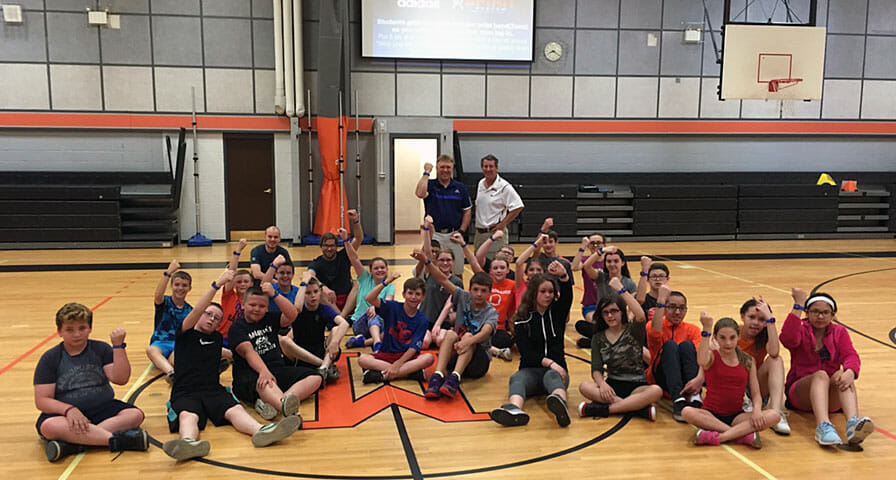Heart rate technology allows teachers to personalize physical education for each student, enabling students of all fitness levels to find success in class.
“Any time you can use a piece of technology to meet a kid at their level, it’s phenomenal,” says Doug Hallberg, PE teacher at Draper (N.Y.) Middle School and the 2017 SHAPE America Teacher of the Year.
Hallberg’s students wear the IHT Zone wrist heart rate monitor during class and study their data through reports sent directly to them through the IHT Spirit System software. Reports show students:
- how much time they spent exercising in their target heart rate zones;
- their heart rate throughout the exercise session;
- and whether or not they met the daily goal for minutes spent exercising at an elevated heart rate.
With their data in their hands – or on their phones – immediately, Hallberg uses the heart rate technology to offer encouraging words to students who may not have met the goal.
“We give them something positive to look at,” he said. “I tell my kids that ‘I want you to do the absolute best that you can as evidenced by you getting into the red.’ If you get to the red zone, you are giving me everything you have at that moment, and that’s all I can ask for.”
By providing students with data specific to their individual performance, teachers use the heart rate technology to help struggling students, regardless of fitness level, understand how to meet their goals.
“It’s the kids who this doesn’t come as easy for who need to experience success and get some feedback as to what they’re really doing,” said Portage Central (Mich.) Middle School teacher John Dunlop. Nobel Charter (Calif.) School PE teacher John Kruse used the technology to achieve a breakthrough with one of his students.
“There was one girl in particular who never met the goal in all the times we’ve used the monitors,” Kruse explained. “She was kind of apathetic and not super-motivated.”
One class period, Kruse asked the student’s partner to help make her run during a pickleball lesson, and when the struggling student returned her heart rate monitor at the end of class and looked at the initial report, she had met her goal. The result, Kruse said, motivated the entire class the following day.
“It ended up being the first time she’d met the goal,” the teacher said. “I gave her a lot of praise that day, and then the next day I shared that with the class. She has a big smile on her face now, which is good.”
Hallberg recalled a day where one of his students who also runs track wasn’t meeting her goal during a particular session. Buoyed with the student’s heart rate data, Hallberg pulled her aside to make sure she was okay. She confided that she was indeed okay but didn’t want to exert herself in class because she had a track meet to compete in later in the day. The episode became a teachable moment that Hallberg wouldn’t have had without the heart rate technology.
“It was about the ability to have that conversation with her and have data to back it up,” he said. “So, I think that’s where the value in this becomes: to meet kids about a very personal and individual level and have a conversation with them about what’s going on.”
That connection, the teachers say, allows their lessons to have a lasting impact.
“I really enjoy teaching something that impacts every other area of education and everybody’s life positively,” said Andy Pulling, PE teacher at Portland (Mich.) High School. “I enjoy getting students who don’t enjoy phys ed or activity to enjoy and value it by the time they leave my class. That’s what motivates me to do what I do.”
Seeking IHT Spirit System information?


